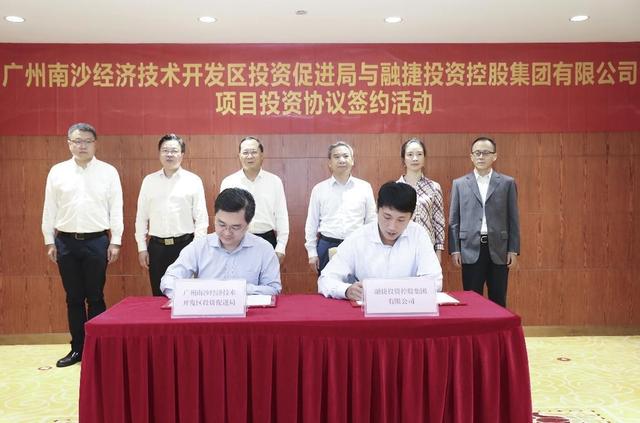Wang Yunjin: Will there be interest rate cuts in the third quarter?
Author:Zhongxin Jingwei Time:2022.07.01
Zhongxin Jingwei July 1st: Will the interest rate cut and lower ratio in the third quarter?
Author Wang Yunjin Zhixin Investment Research Institute senior researcher
On June 29, the central bank announced the main content of the second quarter meeting of the Monetary Policy Commission. The meeting emphasized that "strengthening the adjustment of cross -cycles and counter -cyclicals and increased the implementation of stable monetary policy."
Compared with the first -quarter regular meeting, the judgment of the macro situation in this regular meeting increased the description of "the domestic epidemic prevention and control situation is generally good but the task is still arduous". At present, under the situation of complex political and economic and economic internal and external political and economic, China's macro policies are facing a triple demand for epidemic prevention and control, stability of the economy, and risk control. It is unlikely that the policy is greatly loose, and it is more to speed up a package of policies that have been introduced to go to the ground, and better play the policy effect of steady growth.
Recently, individual small and medium -sized banks 'risk events have potentially enhanced the awareness of the regulatory authorities' prevention and control of the banking industry. At the same time, the market liquidity is also relatively rich. Maintaining a stable operation of monetary policy may be the main foundation of the third quarter.
Compared to stable prices and employment, expanding demand may be more important. The regular meeting emphasized "overall planning to grasp employment and prices", and also mentioned that the pressure of demand shrinkage is still there. Expanding consumption and investment demand, improving production and supply capabilities, can also play a certain role in stabilizing prices and increasing employment. At present, domestic prices are generally controllable; the pace of domestic demand release in the third quarter will not be too fast. Overseas monetary policy is tightened and demand shrinks. The domestic CPI (residential consumer price index) is expected to rise mildly. Keep the downward trend. The core of stability is to quickly restore the normal production and operation of enterprises and increase the supply of employment positions; monetary policy increases the adjustment of counter -cyclical adjustment, stimulates the increase in demand, and at the same time, fiscal policy and measures such as stabilizing jobs will also play a good role in promoting.
Properly improving the macro leverage may be the potential demand for stable growth. This regular meeting does not mention that "maintaining the macro leverage rate is basically stable" may be considered that the current triple pressure is still there, and the stable growth requires the supervision requirements of the leverage ratio appropriately. At the end of 2021, China's macro leverage ratio was 272.5%, which was 23.9 percentage points higher than the end of 2016. It was lower than the average level of the country (International Clearance Bank) to investigate the country, and the macro leverage rate rose moderately. There is a certain space for improving leverage and increasing stimulation demand. The macro leverage rate is generally "steady words", and at the same time, it is necessary to ensure that the national economy is running in a reasonable range.
Structural tools emphasize "increasing the support for inclusive micro -loan". In the past two years, the central bank has issued a number of measures such as increasing small re -loan quotas, launching two direct tools, and reducing re -loan interest rates to support small and medium -sized enterprises. Since 2022, the fiscal policy and monetary policy have been on power, but the policy effects of financing guarantee, support for postponing, slowing taxes, and accelerated tax reductions are not fully affected by the epidemic. To a greater positive role. In April 2022, the interest rate of small and micro enterprise loans issued in April was 5.13%. Compared with the average interest rate of 4.36%of corporate loans in the first quarter, there was still a lot of room for decline. In the third quarter, the central bank may continue to reduce the interest rate of small retro -loan, unblocking the market -oriented interest rate transmission mechanism, and promoting the continuous decline of financing interest rates for small and medium -sized enterprises.
At the end of June, the seasonal increase in funds rose, market interest rates rose stage, but the current liquidity is reasonable and abundant, and the increase will not be too large. On June 24-30, the central bank's 7-day reverse repurchase operating volume increased to meet the seasonal needs of the end of the season. Essence As of June 29, the DR007 (7 -day deposit institutions pledged the repurchase and repurchase and additional equity) rose from 1.6%to 2.0565%, while the R007 (7 -day bank pledge repurchase and additional equity) has risen to about 2.5%. A large level exceeds 2.1%of the central interest rate level. It can be seen that the funding demand for non -bank financial institutions is relatively tight, and the bank liquidity is reasonable. In the third quarter, the central bank will still maintain a reasonable and abundant market liquidity and provide sufficient financial support for economic recovery growth.
The credit policy with amplification capacity and stabilizer will greatly drive the growth of credit and social integration in the third quarter, and the possibility of further relaxation of policies will be less likely to implement a package of policies that have been introduced as soon as possible, and moderately increase cross -cycle adjustment intensity , It may be the main feature. With the significant tightening of overseas monetary policy and the narrow consideration of domestic banks, the probability of reducing policy interest rates in the third quarter is still small. The room for downshifts is still conducive to reducing the cost of banks. The reduction may be appropriate at the end of the quarter, 0.5 percentage points. From the rationality and appropriate consideration of structural monetary policy tools, its scale will be moderately controlled in the second half of the year, and the frequency of use will be significantly reduced. The total tool is still the protagonist of monetary policy operations, but it does not affect the positive role of "addition" in structural tools. (Zhongxin Jingwei APP)
This article was selected by the Sino -Singapore Jingwei Research Institute. The copy of the work produced by the selected work, the copyright of the work, is not authorized by any unit or individual.The views involved in the selected content only represent the original author and do not represent the view of the Sino -Singapore Jingwei.Editor in charge: Song Yafen
Pay attention to the official WeChat public account of JWVIEW (JWVIEW) to get more elite financial information.
- END -
After the release of the Nansha Plan, Nansha ushered in the first major project signing to land

Text, Figure/Yangcheng Evening News all -media reporter Luo Shi Correspondent Nan ...
Central Bank: It will further simplify the procedures for foreign investors to enter the Chinese mar

On June 8th, Zhou Yu, the head of the Central Bank International Department, sai...